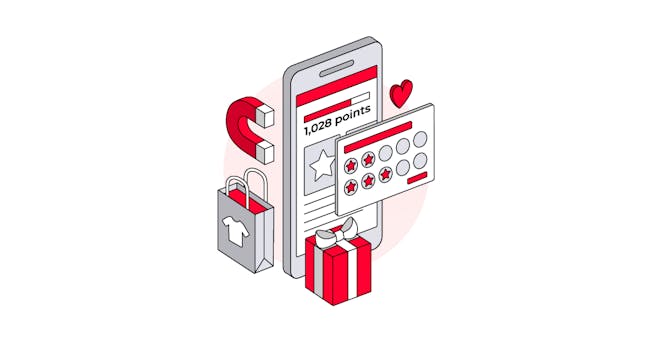Katrina Smart is Commerce Media Director, Europe, at The Mars Agency, and has a decade of experience in retail strategy and media planning.
We caught up with Smart to get an insider’s view on just how much commerce media has changed in the last two years.
Smart also gives us the lowdown on what advertisers should look out for when using self-serve retail media platforms, how they should approach off-site media, and what rising complexity means for those on the buy-side.
Econsultancy: Can you give us a sense of how different commerce media is today, compared to this time two years ago?
Katrina Smart: In short, it’s very different. And compared to five years ago, the landscape has changed completely.
Two years ago, retailers were still really dealing with the aftermath of Covid and changing shopper habits. For example, many retailers have pulled back on things such as point of sale and branding in stores and focus went back to the basics. Even though it was in its infancy back then, search was really key, and self-serve wasn’t widely available at that stage. The focus was on digital and on-site banners, which were quite basic in terms of capabilities at most retailers.
When you consider where we are now, and how much commerce media has grown in the past two years, search is so much bigger, advertisers are now really accustomed to self-serve, and today it’s all about how much retailers can grow and enhance their self-serve capabilities.
If you walked into a Tesco store, the digitised experience is very different to how it was two years ago. There’s now a focus on digitising the in-store experience, too.
There is also a big promise about off-site media and activating higher up the funnel to drive awareness using retail media channels, with budgets that were previously reserved and stuck in a silo for that lower funnel activation. Or, alternatively, there is now a grey area in the upper funnel. There’s lots of exciting things happening, and the landscape is very different.
E: Self-serve platforms – what are the watchouts for brands?
KS: It’s essential that brands are treating ecommerce as part of that full connected commerce opportunity. Don’t treat it as a silo. Make sure it’s integrated as part of the plans. It’s a big pitfall that we see all the time for brands, and it’s almost like a given that they have ecommerce running. But they might not know what it is that’s happening and the impact it can have when it is laddered up to a larger campaign.
First, carefully consider all your basics. Really segment your branded and non-branded keywords into separate campaigns and conduct keyword research. What works for your market? What works for your category? Ensure that you’re naming things consistently. Stay on top of the general housekeeping.
Second, understand the fundamentals. How to optimise and adjust bids and budgets based on the market or specific categories.
Third, be consistent, and in doing so, balance intensity and frequency. Think about how often you’re going to be on the platform and optimising campaigns. If you’re optimising more frequently, this means less subtle changes throughout a campaign. If you’re doing it less frequently, this means you’ll have to make bigger changes. It’s really about being consistent with your approach.
Fourth, follow the data. It’s very transparent what you can do on these self-serve platforms. By looking at things like naming conventions and maintaining consistency, you’ll be able to build up really strong data analysis and reporting that can tell you what you should and shouldn’t be doing. This will help inform your strategy moving forwards.

E: Off-site media – how does the creative approach and the eventual ROAS compare to lower funnel ads?
KS: I think it’s important for advertisers to still keep things really simple. With any piece of media that you’re running, think about what that call to action is, what do you want the customer to do, and who is it that you’re reaching. There are so many questions to help you guide that, but it boils down to keeping things simple.
It’s all about where you want to drive customers, which is usually to the retailer site to purchase, or to your direct-to-consumer site. You need to think about where it is that you’re sending them, and how you communicate that through your creative messaging.
With lower funnel, you don’t really need to think about where you’re sending them because ultimately, you’re likely to be on that retailer’s website. Depending on where you are in terms of that funnel, you’re probably driving them across similar categories. It’s just about driving them to that PDP page or getting them to add to basket.
In terms of the ROAS, I don’t think we have seen enough published off-site retail media to compare it to lower funnel just yet. However the precision of targeting customers through off-site retail media means you are reaching a much larger audience and will be able to see attributed sales and hopefully new-to-brand customers. You can start to reach customers that were not in the conversion and consideration landscape of a retailer website or app, which completely changes the opportunity.
E: How are advertisers dealing with rising complexity?
KS: They’re having to rethink their strategy. They’re starting to realise that they need to be much more agile, and they need to be open to testing new opportunities.
Typically, many advertisers can be really stuck in their ways and do what they always have done historically (very generally speaking). But they’re now understanding just how quick and nimble they need to be. They need to rethink those strategies and pivot their marketing.
They’re also having to upskill their teams, which is a big challenge for advertisers currently with the increased complexities of commerce media. They’re either having to bring in specific talent to help maximise retail media or using partner agencies to manage that for them. This is in tandem with having to work really hard internally to try to figure out who manages what, who’s speaking to which retailer, and who is currently running which campaign across which touchpoint to avoid duplication and wastage (an issue they didn’t really have a few years ago).
E: Commerce media is expanding, with more in-store opportunities, new verticals (such as in banking apps), and lots more off-site partnerships.
Is there a danger of a potential backlash (or perhaps just ennui) from consumers?
KS: I wouldn’t necessarily say there’s any real danger of a backlash, but consumers are becoming increasingly digitally savvy and smarter. They’re more conscious about the data that they’re sharing with brands, retailers, and third parties. And in the process, are beginning to understand its value and expecting more in return.
When you think about loyalty programmes, it’s often been said that you need to ensure that you’re providing this value to the customer. For example, retailers are now frequently offering 10% off, minimum, to those customers who sign up to their newsletter. Consequently, customers are being more and more careful about who they’re sharing their data with as their understanding of its worth grows.
We haven’t hit the ceiling yet in terms of retail media, and I’m not sure where we’ll get to. As long as all commerce media opportunities are there to enhance that customer journey and make it more personalised for them, then it shouldn’t create a backlash for consumers. Ultimately, it should enhance their advertising journey in terms of what they see and create a better customer experience for them.

E: What’s next for retail media and how scalable is it at a retailer level?
KS: We talk about retail media a lot, but we definitely haven’t seen it mature to where it needs to yet. Not only have we not seen it across Europe, but even in the UK, which is the most mature European market, although there are pockets of great capabilities and a few retail media networks leading the way, it’s not consistent across retailers and markets. There’s a way to go in terms of the level of capabilities that we need to reach to reach the potential it has.
I think we’re going to see a real push this year from retail media networks focusing on their offsite propositions and partnerships. Especially after Amazon launched its Prime Video ads in February, retailers already had partnerships with connected TV and broadcasters but these partnerships haven’t really been leveraged to the degree that they could be. I think we’ll really see them pushing that out to advertisers and agencies this year with a much more connected approach between retailers, retail media networks, advertisers and their agencies. This will ultimately help them drive the scale they need to maximise the retail media opportunity and tap into advertiser budgets that have previously not been available to them.
We are also going to see more verticals of retail media launching as businesses look for new ways to drive their bottom line, with Chase being a recent example of this. It is a rise in what you might call ‘non-retail specific’ retail media networks as such. It’s arguably a revolution of first party data that will create new opportunities outside retailers per se, despite continuing to sit within that retail/commerce media bucket.
Explore Econsultancy’s retail media page, our dedicated training, or our wider ecommerce deep dive.
Econsultancy also runs marketing academies for global brands.


Comments